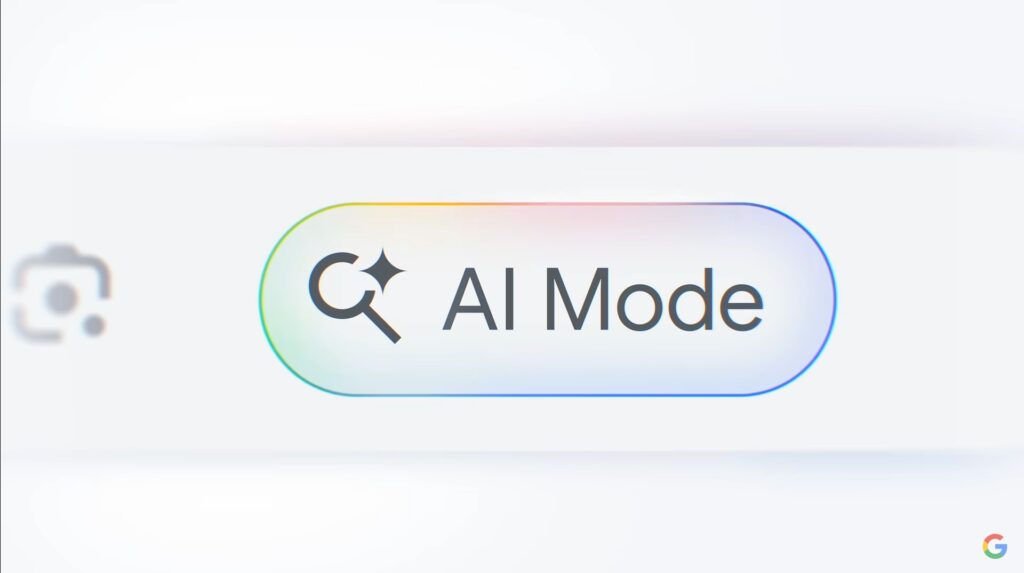My Take on AI Mode: Promising, But Still Experimental
I’ve been in the SEO industry long enough to experience Google testing and scrapping certain ideas. It’s a core part of how it has developed. Features come and go all the time—remember Google Plus? Voice search was another good example that got a lot of hype for years and while is still a common factor in search didn’t reach the heights people were envisioning it to be. Some concepts have stuck and become second nature to us, like video and news content, and now short-form videos are also rapidly on the increase. So, when it comes to the new ‘AI Mode’ I would first caution to look at how Google roll it out, because that is very telling of how people want to experience it (Google’s decisions are based on real user data from Google) before jumping head first and thinking this is definitively here to stay. Now it is rolled out in the US and India is certainly encouraging though that they are looking to provide it to all markets very soon.
A couple of years ago, everyone was talking about “Search Generative Experience” (SGE). It looked like it might be the change people were asking for, but in the end, that’s evolved into AI Overviews, and from there we’re seeing Google experiment further with what they’re now calling AI Mode.
Google has rolled out AI Overviews now so broadly that these look here to stay, whether they remain as common, pulling in the amount of sources they do and other features remains to be seen, but I would feel confident we will see some form of that in search results for the foreseeable future. AI Mode though, I would want to wait until it lands in the UK, and treat the current US and India roll out as a test pilot so they can find all the mistakes, if people actually want to use it and whether it benefits Google’s ultimate goal i.e. continue to drive paid clicks.
Our current strategy is to monitor US and India trends, and news around AI Mode, learn from what they’re testing, and be ready to jump the second it lands here.
Trust in AI-Powered Search (AIO, ChatGPT, etc.)
A lot of the fundamentals of SEO still apply to AI-powered search. These models—ChatGPT, AI Overview (using Gemini) etc. still rely heavily on things like good content, source credibility, and structured data. Structured data looks to be one of the biggest prospects in terms of advancing this understanding as if you can turn your language into something machine-readable, it becomes a lot easier for the models to understand.
This is where Generative Search Optimisation (GEO) comes in. Building on those similar SEO foundations, it introduces tactics tailored for AI‑driven environments. By applying these principles, you help ensure that the information these models surface is not only optimised for understanding but also accurate, relevant to the query, and clearly sourced and transparent—directly contributing to greater trust in AI‑powered search.
Currently I believe Google’s AI Overviews have some trust issues with the sources it pulls from, however recent evidence shows this is improving rapidly amongst younger generations. Furthermore, I’ve seen many cases, where I’ll get two conflicting ideas in the same paragraph due to the nature of LLM taking two or more sources and merging them into one sentence.
That’s not to say ChatGPT doesn’t do something similar, but I personally find it more useful for understanding and processing information rather than for direct search queries.
AI’s Impact on Click-Through-Rate
There’s no doubt in my mind that AI answers are reducing clicks with some studies saying up to +34%, especially at the top of the funnel. If users can see a full answer they are happy with in the search results, then they’re not clicking through to your site. The terminology used (even by Google now as it is affecting their site too) is ‘The Great Decoupling’.
But one important point I come back to, is Google’s ultimate commercial purpose which is making money from ads. Ads show much more commonly on commercial terms, not general knowledge queries, and as a result we see AI Overview appearing a lot less on these queries. Google hasn’t replaced that with an AI Overview, but instead have started integrating ads into the AI Overview. Now that ads are also added in, it may once again bring trust into question for a common user.
For most businesses, commercial pages are still the priority. AI answers are interesting for informational content and brand awareness, but if the priority remains conversions and revenue the focus can remain on bottom-of-the-funnel content. The industries that will feel the biggest impact are those that are queries, traffic or engagement driven. Such as news and guide sites.
That said, it’s important to note that we are already seeing a shift in search behaviour—users are searching more conversationally and expecting specific, created responses. Google has reported growth in query length year over year, with longer queries (5+ words) increasing by 19% YoY, while shorter queries (under 4 words) have grown by only 4% YoY. It will be interesting to see how these patterns continue to evolve in the coming months.
Conclusion
Google has consistently found ways to keep more users on its platform, engaging as much as possible with them directly. Whether it’s AI Overviews or their previous advances in travel, jobs and shopping interfaces, the goal is the same—reduce the need for people to click away until they come to purchase (and therefore click on an ad).
If you’re running a news site, a forum, or anything based on top-funnel content, I’d be worried about your traffic figures, especially if you go and collate the first-party for Google to gain all the credit and engagement. But for brands and businesses focused on conversions and transactions, there’s still a strong case to stick to the basics: great content, structured data, clear value. In fact, we have commonly seen that while traffic goes down, the conversion rate goes up, and there’s no impact or even a positive one in terms of conversions, as those users entering your website are then a lot more qualified and ready to buy. That’s not to say appearing in AI Overviews should just be ignored, but rather it’s just another touch point in the journey
The traditional click-through-rate estimates the industry has used (e.g. 30% CTR if you rank #1 organically) will likely be reduced and replaced, but there’s still going to be a percentage that is sizeable to not be ignored. But instead, GEO and SEO optimisation should be done in tandem, to target the user whenever they are searching.









